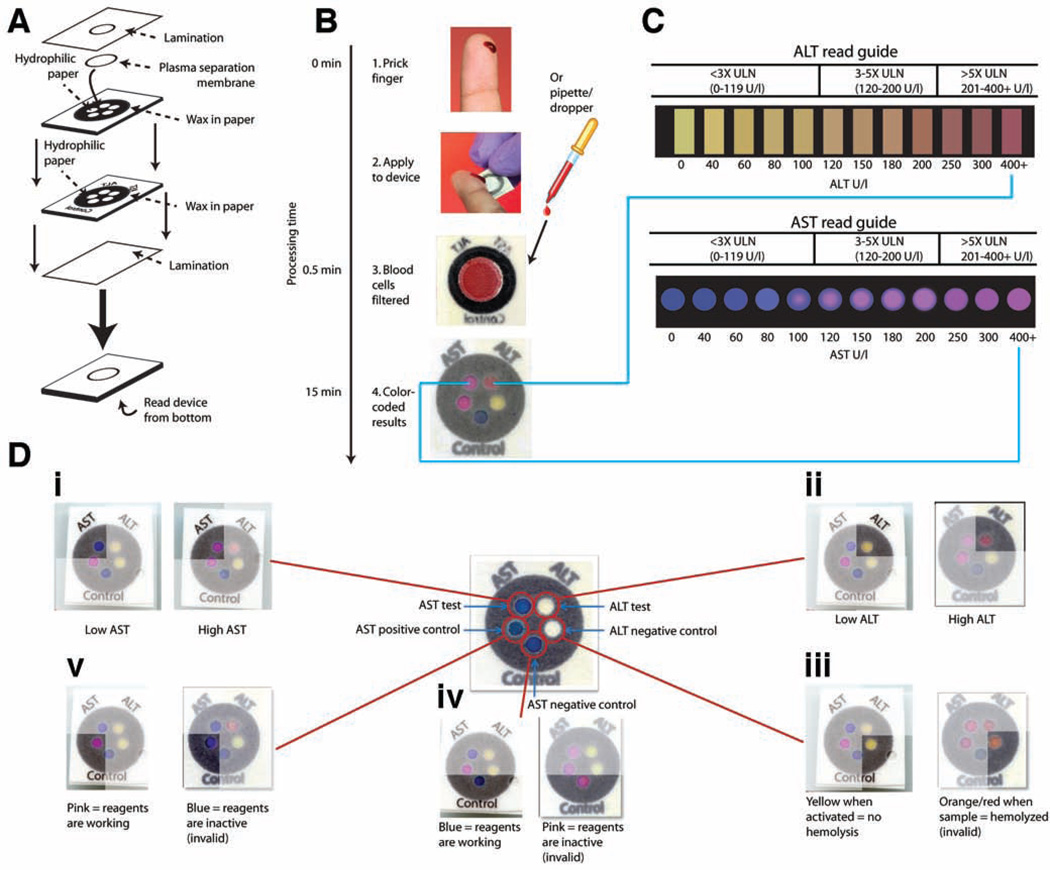Fig. 1.
Schematic of the paper-based AST/ALT test design and protocol. (A) The device consists of two layers of similarly patterned paper, a plasma separation membrane, and a laminated cover of polyester film. (B and C) A drop of whole blood (either a fingerstick specimen or 30 µl of a specimen obtained by venipuncture) is applied to the back of the device. Red and white blood cells are filtered out by the plasma separation membrane, whereas plasma wicks to the five detection zones through patterned hydrophobic channels in the paper (B). After 15 min, the AST and ALT test zones are matched to a color read guide (C) to obtain a concentration value. Results are interpreted as being within one of three bins of values: <3× ULN (ULN defined as 40 U/liter); 3–5× ULN; or >5× ULN. (D) Detailed schema of the paper-based transaminase test and possible colorimetric readouts for the 5 zones (i to v). A schematic of test and control zones (before receiving a sample) is shown in the center of the figure. (i) AST test zone: low/normal AST values (<80 U/liter) result in a dark blue color, whereas high AST values (>200 U/liter) result in a bright pink color. (ii) ALT test zone: low/normal ALT values (<60 U/liter) result in a yellow color, whereas high ALT values (>200 U/liter) result in a deep red color. (iii) ALT negative control zone: a change from white to yellow indicates appropriate device activation; in the event of sample hemolysis, the zone becomes orange/red and the device is read as “invalid.” (iv) AST negative control zone: the baseline blue color remains unchanged if dye chemistry is functioning properly, whereas the zone becomes bright pink in the event of nonspecific dye reaction and the device is read as “invalid.” (v) AST positive control zone: the zone changes from blue to pink if AST reagents are functioning properly, but remains dark blue if either the reagents are not functioning or the zone is not activated, in which case the device is read as “invalid.”
From Pollock NR, et al, A paper-based multiplexed transaminase test for low-cost, point-of-care liver function testing. Sci Transl Med 2012; 4:152ra29. Reprinted with permission from AAAS.

